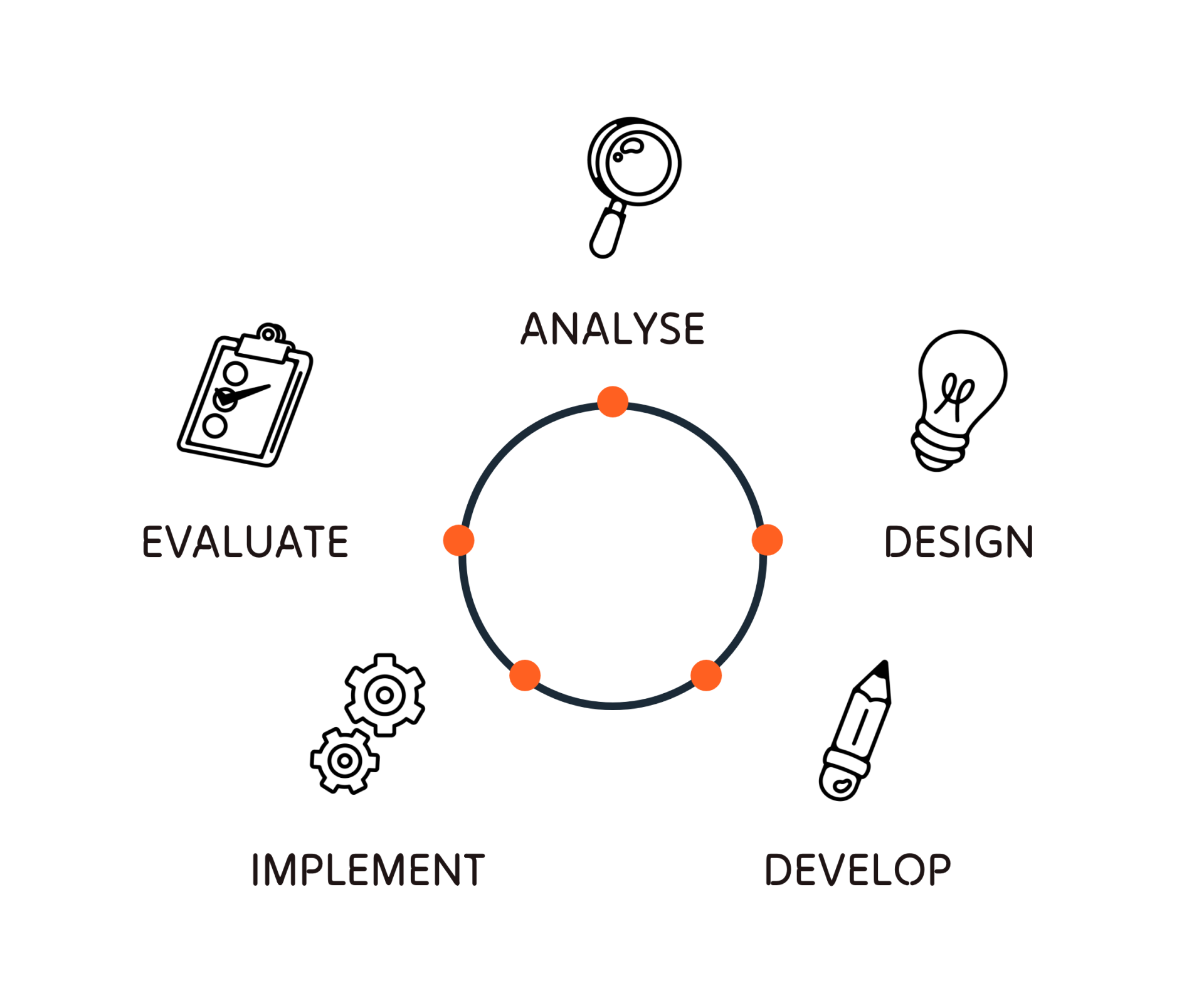In the dynamic realm of learning design, staying ahead of the curve requires mastering robust methodologies. Enter the ADDIE Model—a time-tested instructional design framework that's your ticket to creating impactful learning experiences. If you're looking to enhance your skills and deliver training that resonates, understanding and applying the ADDIE Model is a must.
What is the ADDIE Model?
The ADDIE Model is an acronym that stands for Analyse, Design, Develop, Implement, and Evaluate. It's a systematic approach to instructional design that ensures training programs are effective, efficient, and aligned with learners' needs.
Let's break down each phase:
Let's break down each phase:
- Analyse: In this initial phase, you identify the learning problem, define the goals and objectives, and understand the learners' needs. It's about gathering information to ensure your training is relevant and targeted.
- Design: Here, you create a blueprint for your course. This includes designing the content structure, selecting instructional strategies, and planning assessments. The goal is to create a detailed plan that guides the development process.
- Develop: This is where the rubber meets the road. You create and assemble the content and materials based on the design plan. This might include writing scripts, developing multimedia elements, and producing training manuals.
- Implement: In this phase, you deliver the training to the learners. This could be through various formats such as e-learning, classroom training, or blended learning. It's crucial to ensure everything is in place for a smooth delivery.
- Evaluate: Finally, you assess the effectiveness of the training. This includes both formative evaluation (ongoing feedback during the process) and summative evaluation (assessing the overall effectiveness after completion).

Why the ADDIE Model is Relevant to Learning Design
The ADDIE Model is a cornerstone in the field of instructional design because it provides a structured approach that can be adapted to various learning environments and needs.
Here are some key benefits:
Here are some key benefits:
- Clarity and Focus: By breaking down the design process into clear, manageable phases, ADDIE helps you maintain focus and ensures nothing is overlooked.
- Scalability: Whether you're designing a short workshop or a comprehensive training program, the ADDIE Model scales to fit your needs.
- Quality Assurance: With its built-in evaluation phase, ADDIE ensures your training is not only effective but also continuously improved based on feedback and outcomes.
- Adaptability: The model is flexible enough to be used across different industries and types of training, from corporate environments to educational institutions.
How to Apply the ADDIE Model in Practical Ways
Applying the ADDIE Model effectively requires thoughtful planning and execution.
Here's how you can bring it to life:
Here's how you can bring it to life:
- Conduct Thorough Needs Analysis: Engage with stakeholders, conduct surveys, and analyse existing data to understand the specific learning needs. This sets a solid foundation for the rest of the process.
- Design with the Learner in Mind: Develop learner personas to guide your design decisions. Use storyboarding to visualise the learning journey and ensure your content is engaging and relevant.
- Leverage Technology in Development: Use e-learning authoring tools like Articulate 360 or Adobe Captivate to create interactive and multimedia-rich content. This can enhance engagement and retention.
- Pilot Your Training: Before full-scale implementation, run a pilot session to gather feedback and make necessary adjustments. This helps in ironing out any issues and ensures a smoother rollout.
- Implement and Evaluate Continuously: Use learning management systems (LMS) to track participation and performance. Gather feedback through surveys and assessments, and use this data for continuous improvement.
Tips for Mastering the ADDIE Model
The ADDIE Model is more than just a framework; it's your blueprint for creating meaningful and effective learning experiences. By mastering each phase and applying it thoughtfully, you can design training that not only meets but exceeds learners' expectations.
Want to dive deeper into the ADDIE Model and watch your instructional design skills soar? Our Instructional Design PLUS course will give you take you through step-by-step, with a toolkit of templates and guides to support you every step of the way.
Related articles:
Want to dive deeper into the ADDIE Model and watch your instructional design skills soar? Our Instructional Design PLUS course will give you take you through step-by-step, with a toolkit of templates and guides to support you every step of the way.
Related articles:




